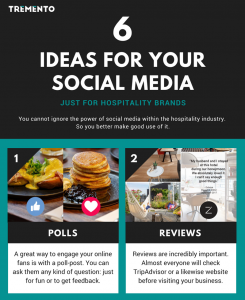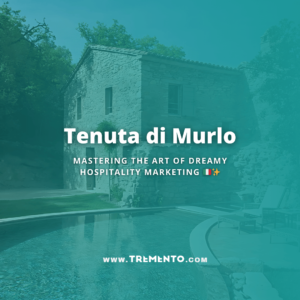[vc_section][vc_row row_type=”row” use_row_as_full_screen_section=”no” type=”full_width” angled_section=”no” text_align=”left” background_image_as_pattern=”without_pattern”][vc_column][vc_single_image image=”17634″ img_size=”full” alignment=”center” qode_css_animation=””][vc_empty_space height=”30px”][vc_column_text]
If you’ve never heard of the Lonely Planet, you have
- been living under a rock
- or you are a complete anti-traveler.
You may not be aware of all the different travel guides that there exist – there are so many – or you may be the kind of person that doesn’t use a travel guide (‘there is enough information on the internet’, ‘a travel guide takes up too much space in my backpack’). But you certainly have had a guide in your hands at some point. Today, in this post, we take a look at travel guides. We discover what we can learn from ‘time to momo’ (a serie of travel guides). Because a travel guide to your destination might be the missing asset in your destination marketing – while it could be your strongest.
[/vc_column_text][vc_empty_space height=”30px”][/vc_column][/vc_row][vc_row row_type=”row” use_row_as_full_screen_section=”no” type=”full_width” angled_section=”no” text_align=”left” background_image_as_pattern=”without_pattern”][vc_column][vc_column_text]
The Age of Online Travel Guides
[/vc_column_text][vc_empty_space height=”30px”][vc_column_text]
With the development of the blog sphere and informative websites, travel guides have become less necessary than they used to be. Back in the days, a Lonely Planet was like a bible. But in the current digital world we can look up any information we want at any given time. We can ask locals and travelers for advice through social media or platforms like TripAdvisor. There is no real reason to buy a travel guide other than that they may provide the information all handy put together, right?
[/vc_column_text][vc_empty_space height=”30px”][vc_column_text]
Well, I don’t agree. Especially in the case of the time to momo travel guides. These travel guides are very different to guides like the Lonely Planet thanks to their structure and set-up. They don’t give you a list of tips on a certain location or just the top 3 activities. Nope. They provide you with 6 fun walking routes that combine the following categories:
- View points (highlights)
- Food & drink
- Shopping
- Fun to do
[/vc_column_text][vc_empty_space height=”30px”][vc_single_image image=”17614″ img_size=”full” alignment=”center” qode_css_animation=””][vc_empty_space height=”30px”][/vc_column][/vc_row][vc_row row_type=”row” use_row_as_full_screen_section=”no” type=”full_width” angled_section=”no” text_align=”left” background_image_as_pattern=”without_pattern”][vc_column][vc_column_text]
What about these routes?
[/vc_column_text][vc_empty_space height=”30px”][vc_column_text]
There are routes in all different sizes, with a maximum length of 3 hours if you don’t extensively visit the highlights on the route. Above each route the time and distance of the route is indicated. You can also always alter the route a little bit if you think it’s too long or skips something you are actually interested in.
[/vc_column_text][vc_empty_space height=”30px”][vc_column_text]
The routes consistently manage to integrate places and spots that you otherwise wouldn’t have heard of. Their guides are created by real locals, meaning they have access to insights you probably won’t find on TripAdvisor or a likewise platform.
[/vc_column_text][vc_empty_space height=”30px”][vc_column_text]
A smart thing they do to meet the requirements of each guest is that, besides buying the physical guide, you can also buy an app-version of the guide or just one specific route (you then choose the neighborhood(s) you want to explore). These last two options are cheaper than buying the physical guide which make them great options for people who only have a short amount of time to see a city.
[/vc_column_text][vc_empty_space height=”30px”][vc_gallery type=”image_grid” images=”17617,17625,17628″ img_size=”400×400″ column_number=”3″ grayscale=”no” images_space=”gallery_with_space”][vc_column_text]
Photos from time to momo and Oranje Vormgevers
[/vc_column_text][vc_empty_space height=”30px”][/vc_column][/vc_row][vc_row row_type=”row” use_row_as_full_screen_section=”no” type=”full_width” angled_section=”no” text_align=”left” background_image_as_pattern=”without_pattern”][vc_column][vc_column_text]
Add more value with a blog
[/vc_column_text][vc_empty_space height=”30px”][vc_column_text]
“Our routes guide you not just along the highlights, but also to spots you, as a tourist, normally wouldn’t find. Tips only a local can give. That’s why all our authors are required to be living in the city.”
[/vc_column_text][vc_empty_space height=”30px”][vc_column_text]
Time to momo goes beyond their physical guide by having a blog. Their blog is always pretty up to date and they have a unique blog for each city. Their ‘local’ writes the articles. This is interesting, because this way their blog always manages to give you different information than general travel blogs of people who just visit a city once. By continuously updating the blog on one specific location their content stays relevant and interesting. I will find the latest and greatest tips regarding Amsterdam on the time to momo blog (or another local’s blog), not on the blog of someone who ‘travels the world and just visited Amsterdam for a few days’. I used to even go to their blog to find tips about my own city, the city I lived in. Even though I was a local myself I’d still read the blog posts about Madrid and Utrecht while I was living in those cities.
[/vc_column_text][vc_empty_space height=”30px”][/vc_column][/vc_row][vc_row row_type=”row” use_row_as_full_screen_section=”no” type=”full_width” angled_section=”no” text_align=”left” background_image_as_pattern=”without_pattern”][vc_column][vc_column_text]
YOU can be the publisher
[/vc_column_text][vc_empty_space height=”30px”][vc_column_text]
I think it would be incredibly interesting and useful for any hotel or hostel to set up their own walking guide. It’s a perfect tool to set up long-lasting partnerships in your area. You can promote boutiques, restaurants, cafés and tours through your guide and set up little contracts with each of those to get promoted by them in return. Besides that, providing your guests with a guide like this will be much appreciated by your visitors. How many of your guests come to your reception and ask you for your advice? Plenty. And those who don’t are likely still on the look for insider information – but just to shy to ask. If you are the one offering them a fun route to walk in your area, then I bet they will thank you later. The best moment to hand your guests this guide would be during check-in. This way you can hand it over to them personally and you’re sure every single one of your guests gets the information.
[/vc_column_text][vc_empty_space height=”30px”][vc_column_text]
And regarding costs: you don’t need to necessarily print your guide, meaning: this doesn’t have to cost you any money. Although I’d advice you to invest in a graphic designer to pimp your guide a little and to make it fit your brand’s style. That’s definitely worth the money. And let it go through a thorough typo- and grammar check. If you have this guide designed as a trifold or Z-fold leaflet it would also be super cheap to have it printed. In that case I would advice you to invest a small part of your marketing budget. You could also ask partners if they’d like to have a small ad in your leaflet against an x-amount of money – that would then easily cover your investment. Just two partners could make up for about 10.000 leaflets. Websites like vistaprint offer super cheap printing options.
[/vc_column_text][vc_empty_space height=”30px”][vc_single_image image=”17632″ img_size=”full” alignment=”center” qode_css_animation=””][vc_empty_space height=”30px”][/vc_column][/vc_row][vc_row row_type=”row” use_row_as_full_screen_section=”no” type=”full_width” angled_section=”no” text_align=”left” background_image_as_pattern=”without_pattern”][vc_column][vc_column_text]
What can you learn from time to momo?
[/vc_column_text][vc_empty_space height=”30px”][vc_column_text]
- Involve a local to get surprising and authentic tips into the guide and to make it stand out from the crowd.
- Connect a blog to the guide. This is the best way you to stay relevant.
- Offer people the option to download or buy just one route instead of the whole guide.
- Find partnerships for your guide or route. Offer cross-promotion options. Let them contribute to your guide. With discounts, useful information, small non-obvious ads. Or integrate them in the route, make them part of it. This works especially well with boutiques, restaurants and such. In return you ask a contribution to printing and/or promotion costs.
[/vc_column_text][vc_empty_space height=”30px”][/vc_column][/vc_row][vc_row row_type=”row” use_row_as_full_screen_section=”no” type=”full_width” angled_section=”no” text_align=”left” background_image_as_pattern=”without_pattern”][vc_column][vc_column_text]
6 ideas for your social media
[/vc_column_text][vc_empty_space height=”30px”][vc_column_text]Get 6 free ideas for your hospitality brand’s social media. Just click the image below, sign up and it will come straight to your inbox.[/vc_column_text][vc_empty_space height=”30px”][vc_row_inner row_type=”row” type=”full_width” text_align=”left” css_animation=””][vc_column_inner][vc_column_text]
If you liked this post, you might also like:
[/vc_column_text][vc_empty_space height=”30px”][/vc_column][/vc_row][/vc_section][vc_row][vc_column][epic_block_11 compatible_column_notice=”” number_post=”4″ post_offset=”0″ include_category=”148″][/vc_column][/vc_row]



